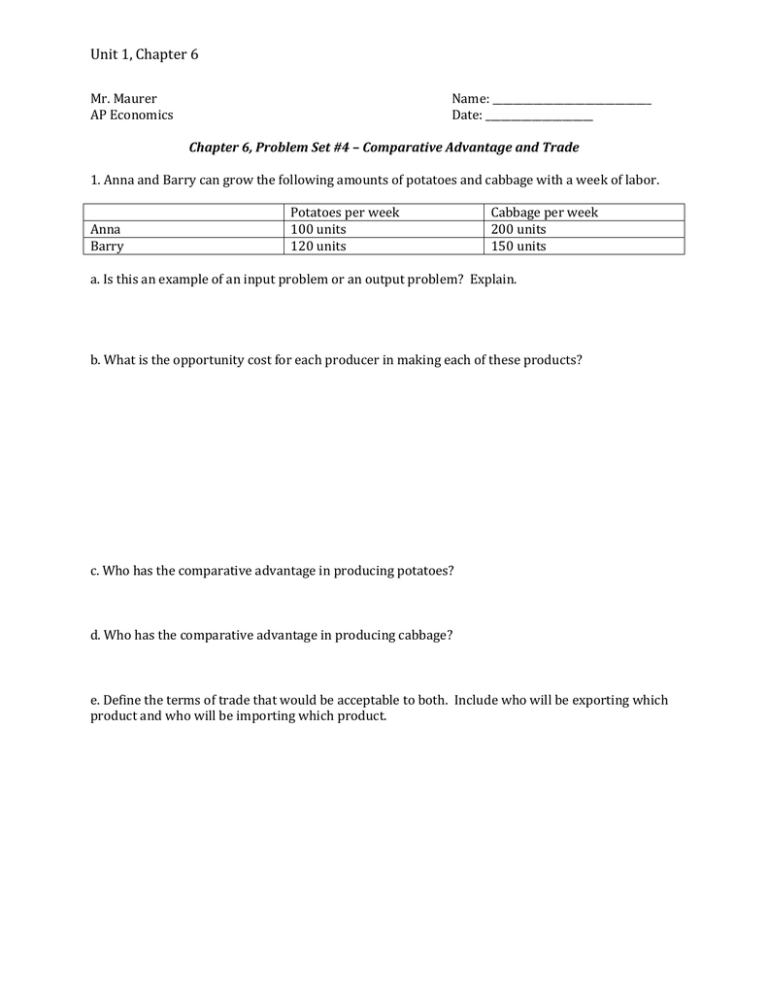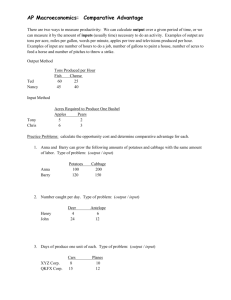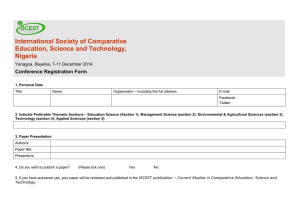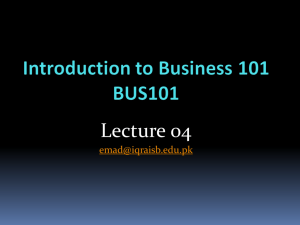Unit 1, Chapter 6 Mr. Maurer Name: AP Economics Date: Chapter 6
advertisement

Unit 1, Chapter 6 Mr. Maurer AP Economics Name: _______________________________ Date: _____________________ Chapter 6, Problem Set #4 – Comparative Advantage and Trade 1. Anna and Barry can grow the following amounts of potatoes and cabbage with a week of labor. Anna Barry Potatoes per week 100 units 120 units Cabbage per week 200 units 150 units a. Is this an example of an input problem or an output problem? Explain. b. What is the opportunity cost for each producer in making each of these products? c. Who has the comparative advantage in producing potatoes? d. Who has the comparative advantage in producing cabbage? e. Define the terms of trade that would be acceptable to both. Include who will be exporting which product and who will be importing which product. Unit 1, Chapter 6 2. Henry and John are fishermen who catch bass and catfish. This chart shows how many of each type of fish they can catch in one day. Bass Catfish Henry 4 bass 6 catfish John 24 bass 12 catfish a. Is this an example of an input problem or an output problem? Explain. b. What is the opportunity cost for each producer in catching these fish? c. Who has the comparative advantage in catching bass? d. Who has the comparative advantage in catching catfish? e. Define the terms of trade that would be acceptable to both. Include who will be exporting which product and who will be importing which product. Unit 1, Chapter 6 3. Here are the numbers of acres needed in India and China to produce 100 bushels of corn or 100 bushels of rice each month. Corn Rice India 9 acres 3 acres China 8 acres 2 acres a. Is this an example of an input problem or an output problem? Explain. b. What is the opportunity cost for each producer in making each of these products? c. Who has the comparative advantage in producing corn? d. Who has the comparative advantage in producing rice? e. Define the terms of trade that would be acceptable to both. Include who will be exporting which product and who will be importing which product. Unit 1, Chapter 6 4. This chart shows how many cans of olives and bottles of olive oil can be produced in Zaire and Columbia from one ton of olives. Olives Olive oil Zaire 60 cans 10 bottles Columbia 24 cans 8 bottles a. Is this an example of an input problem or an output problem? Explain. b. What is the opportunity cost for each producer in making each of these products? c. Who has the comparative advantage in producing olives? d. Who has the comparative advantage in producing olive oil? e. Define the terms of trade that would be acceptable to both. Include who will be exporting which product and who will be importing which product.




